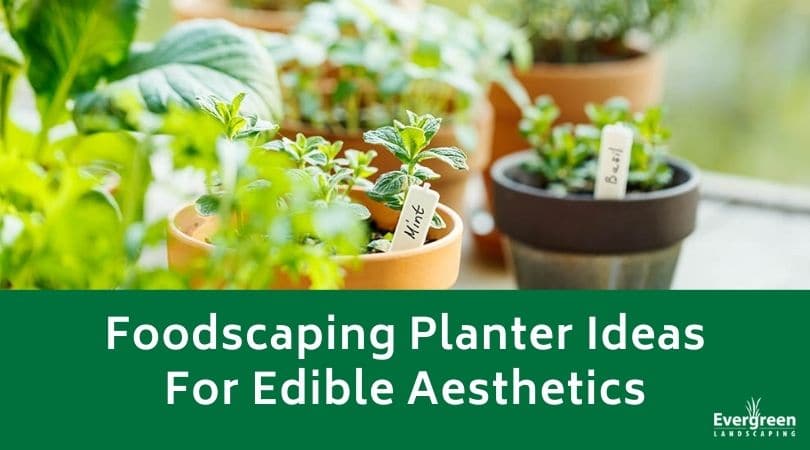
Take a good look at your neighbor’s landscaping in their front yard. What do you see cleverly hidden between their hydrangea bushes? If your neighbor started foodscaping, they could be using the hydrangea bushes to camouflage their tomato plants. The hydrangea bushes have stiff branches that nicely hide the tomato plant’s lumpy fruit and floppy stems. The goal is to mix ornamental plants with edibles in the same planting space so you only really see the ornamental plants.
It’s possible to foodscape if you only have a small yard. Trendy foodscaping is planting edible crops throughout your existing landscape or available area. It’s a nice strategy to help you grow healthy, fresh produce while making the most of your current landscape design.
How to Mix Edibles and Ornamentals
To start, you want to look for a space to start planning your foodscape. For people who live in an area that has a HOA, you should get in touch with a landscaping professional to help you put together a viable plan to determine your exposure and scale your area. Food crops will usually need more sunlight exposure than shade each day. You can make this area as large or small as you want, depending on your space. Maybe you have 10-square feet, or you’ll plant between your existing shrubs.
You also have to decide what you want and like to eat. One of the biggest oversights people make when they grow vegetables is that they don’t think about what they like to eat. Start by writing down the top five vegetables that you plan to use on a weekly basis. For example, if you like to eat cabbage or eggplants, they can be pretty enough to mix right into your foundation landscape.
You should also plan to build your soil. Once you pick out your area to plant, you want to top dress a layer of compost over your existing mulch. You can contact your state or county extension service agent and ask them to test your soil. This will give you a good idea of what you’re working with. Learn what your nutrient ratios are, your soil’s pH levels, and what type of fertilizer you should add, along with how much. Don’t overfeed the area, or you risk killing some of your plants.
Once you get your soil ready to go, you can start planting. Plant tomato plugs, seeds, eggplants, peppers, or other edibles in your newly built-up soil. Generally speaking, it’s better to start with direct-sow small seeds to ensure you get a good crop. This means you have to plant sooner in the season rather than later.
Next, add a layer of mulch around your plants. Use a very light layer because you don’t want to attract voles, and they like organic, loose materials. You’ll only need a 1/2-inch of mulch. If you plan to sow seeds, you want to use 1/2 to 1-inch of mulch for warm-season crops and cut back to 1/4-inch of mulch for cool-season crops. You will get some weed growth, but you can take care of them as you see fit.
Foodscape Ideas
There are several ideas you can use to set up your first foodscape. These ideas include but are not limited to:
- Plant strawberries as a groundcover for your foundation. They go well around existing shrubs below your window.
- Consider adding blueberry plants around the border of your property, or they can work to help disguise your air conditioner. Adding peanuts around them will add nitrogen to the soil, and the cover will help keep your blueberry plant’s roots cooler.
- Lettuce, garlic, arugula, and greens go well into edges or your small available spaces, as do herbs like basil and parsley.
- Vining plants with bigger leaves like sweet potatoes, squash, or pumpkin work well as groundcovers. All you have to do is pull them up at the end of the season.
Contact Evergreen Landscaping
If you’re ready to come up with foodscaping planter ideas for your yard, we can help. We invite you to reach out and get in touch with our talented staff to design a viable foodscape to mix ornamental and edible plants.
